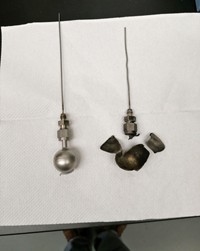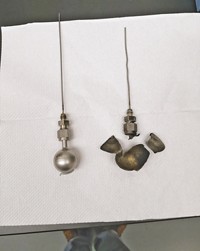Advertisement
Grab your lab coat. Let's get started
Welcome!
Welcome!
Create an account below to get 6 C&EN articles per month, receive newsletters and more - all free.
It seems this is your first time logging in online. Please enter the following information to continue.
As an ACS member you automatically get access to this site. All we need is few more details to create your reading experience.
Not you? Sign in with a different account.
Not you? Sign in with a different account.
ERROR 1
ERROR 1
ERROR 2
ERROR 2
ERROR 2
ERROR 2
ERROR 2
Password and Confirm password must match.
If you have an ACS member number, please enter it here so we can link this account to your membership. (optional)
ERROR 2
ACS values your privacy. By submitting your information, you are gaining access to C&EN and subscribing to our weekly newsletter. We use the information you provide to make your reading experience better, and we will never sell your data to third party members.
Lab Safety
Guidance gathered for working with lithium aluminum hydride
Publication aims to help chemists develop standard operating procedures for working with this potentially dangerous reagent
by Bethany Halford
March 4, 2024
| A version of this story appeared in
Volume 102, Issue 7
Lithium aluminum hydride (LAH) is a strong reducing agent used to make myriad molecules. But LAH reacts violently with water to form hydrogen gas, which can cause fires and explosions. While chemists could find reports of these incidents in various publications, until now there was no single resource that detailed the best practices for handling LAH.
A new publication in ACS Chemical Health and Safety pulls that information into a single resource for chemists working in academic labs (2024, DOI: 10.1021/acs.chas.3c00102).
“This is a guidance document,” says Tilak Chandra, a chemical safety specialist at the University of Wisconsin–Madison who coauthored the article with his colleague Jeffrey Zebrowski. Chemists can use the information in this publication to develop a standard operating procedure for the reaction they plan to do, Chandra says.
“There’s a lot of information out there. It’s just a matter of packaging the information in a useful format in one place,” Zebrowski says of the publication. “We’re not inventing this stuff.”
The publication gives chemists several tools for working with LAH. It outlines how to best prepare glassware for a reaction with LAH, how to weigh the chemical and add it to a reaction vessel, and how to safely dispose of small excess amounts of it. The publication also has an emergency checklist to review before working with LAH. “Our big message is: make sure you do a proper risk assessment,” Zebrowski says.




Join the conversation
Contact the reporter
Submit a Letter to the Editor for publication
Engage with us on Twitter